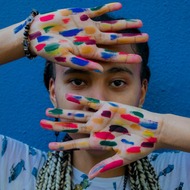Cultural Differences and Conflicts - Storyboards and Fotonovelas
(View Complete Item Description)Middle school is a conflict-ridden stage, particularly for our emerging bilingual students, who are normally known as ELLs. Not only do they have to overcome numerous problems of linguistic and cultural adaptation, but they also have to face challenges such as family or economic instability and moves, often cross-border. Indeed, it is not uncommon to meet Hispanic students: Mexicans, Puerto Ricans, Salvadorans, etc. who travel to their countries of origin, or to the countries of origin of their parents for seasons, sometimes even to stay and live there, despite having been born in the United States and having lived here all their schooling until that moment. It is also quite common to see students who migrate with their families to the United States when they are already 11 or 12 years old and who, as we mentioned, not only have to learn the language, but adapt to a new life, culture and traditions.In this lesson plan we propose to use these personal experiences to introduce basic conversational vocabulary. It is designed for both dual immersion programs and English development classes.
Material Type: Lesson




















